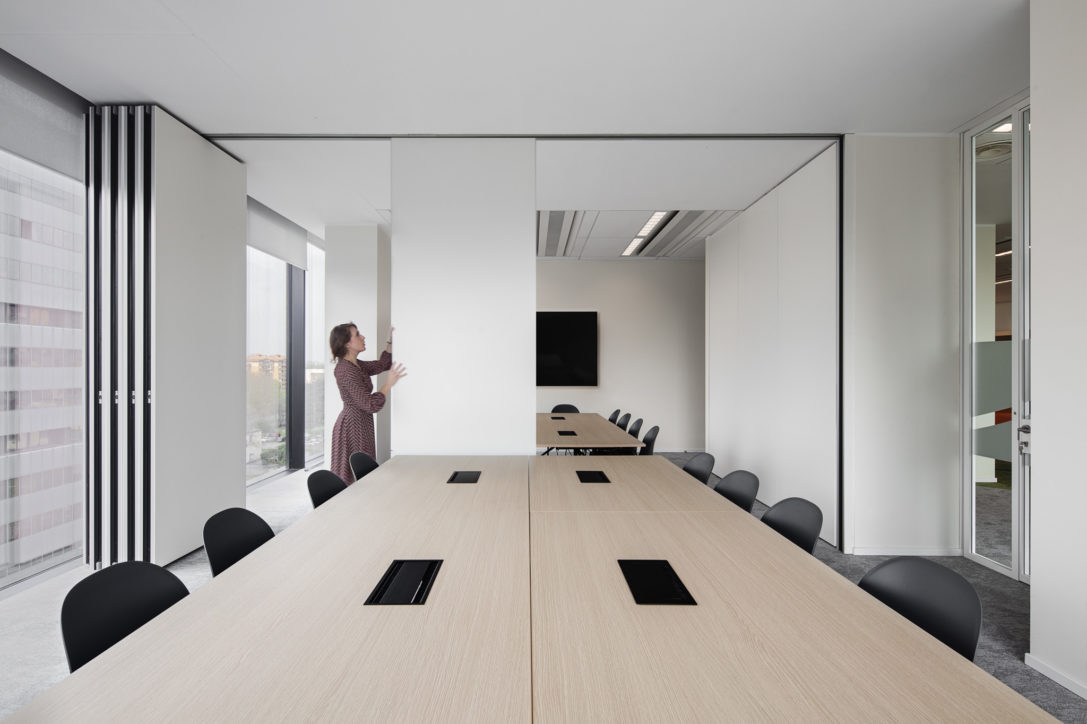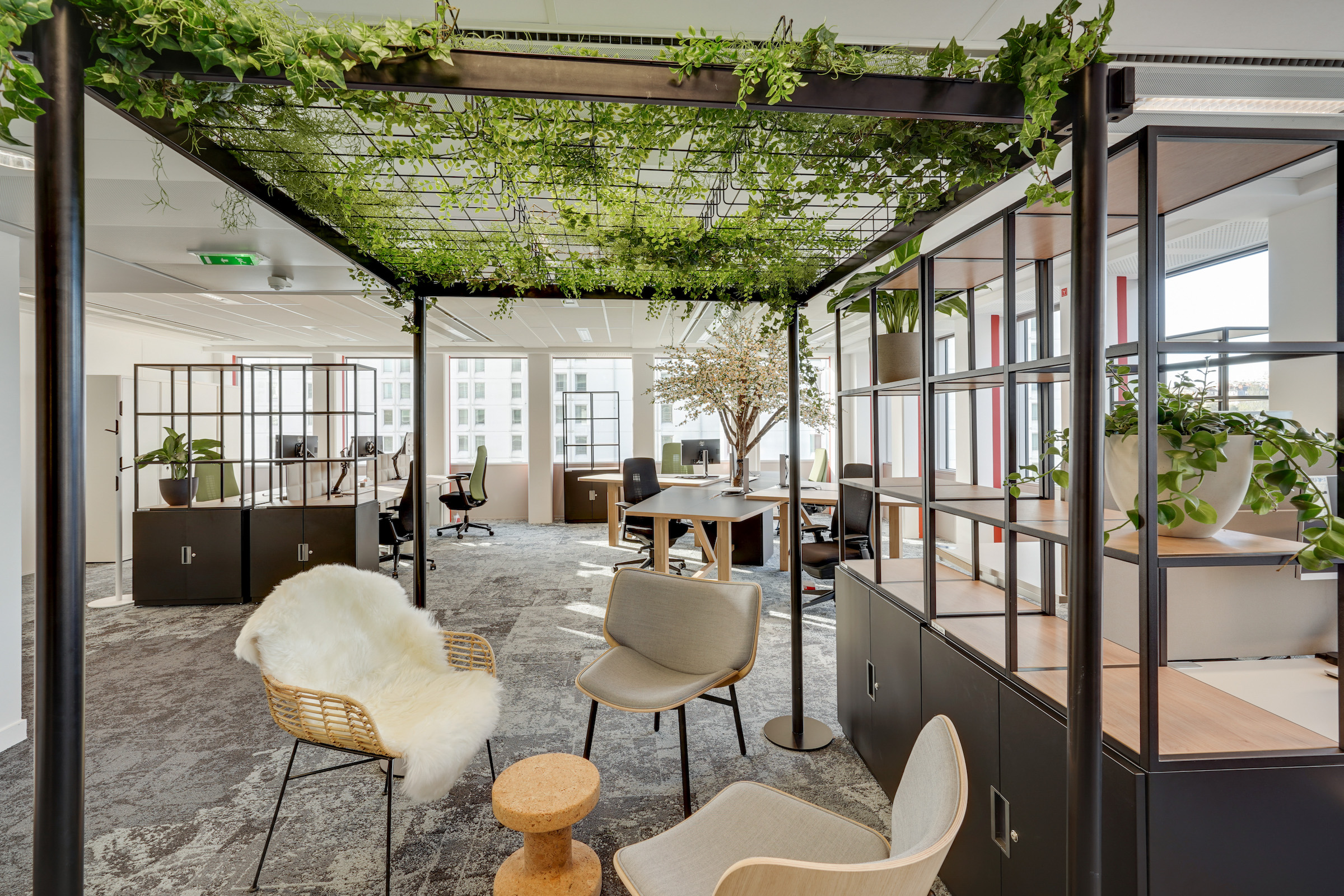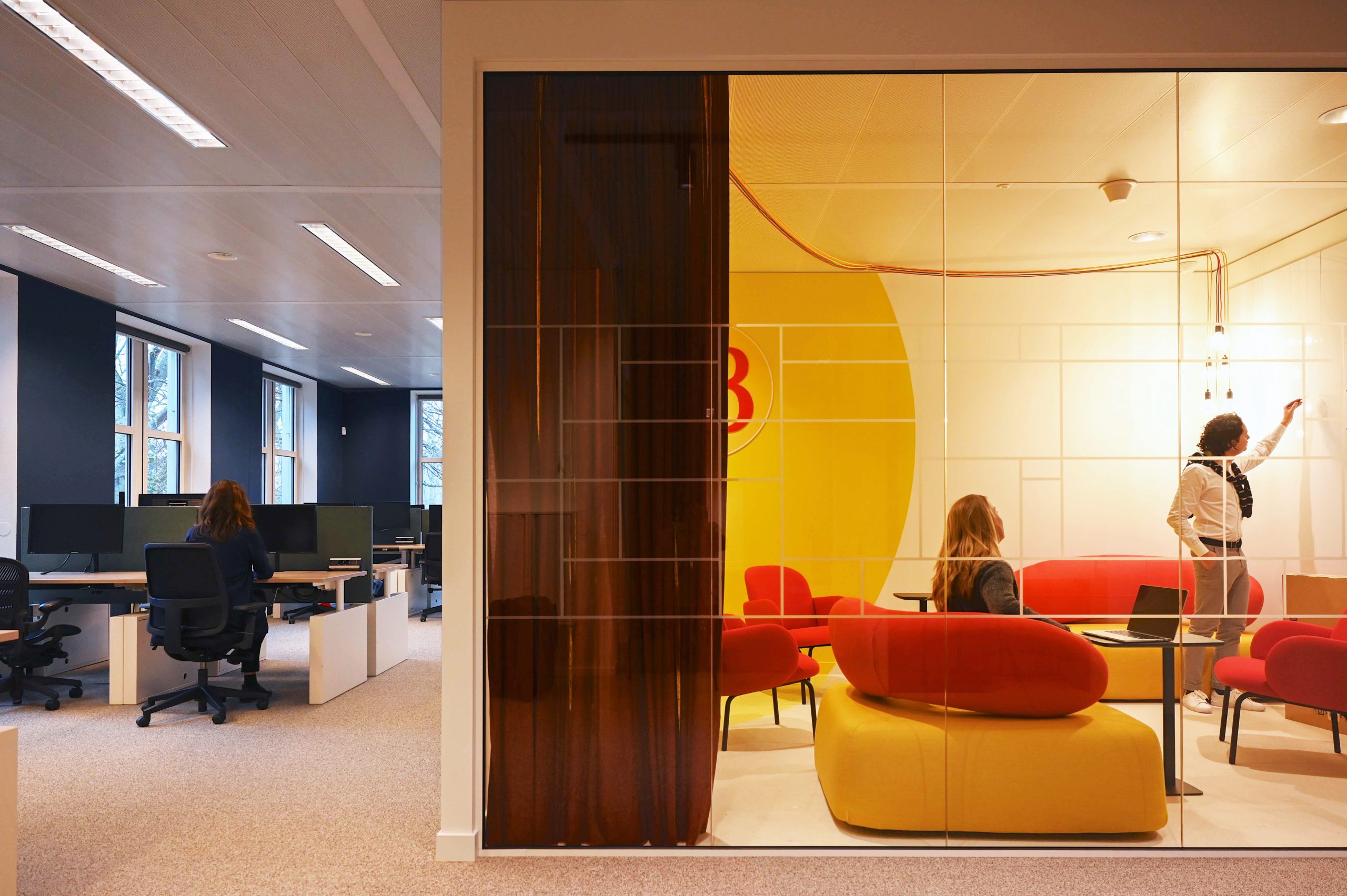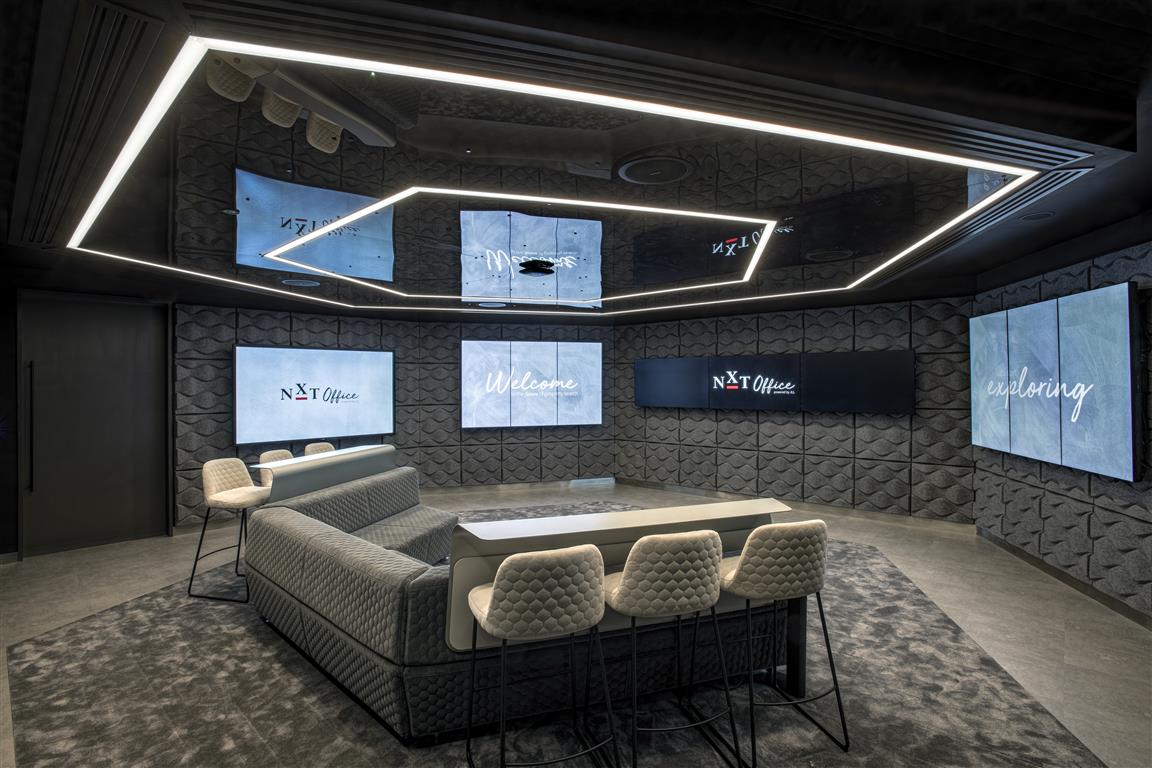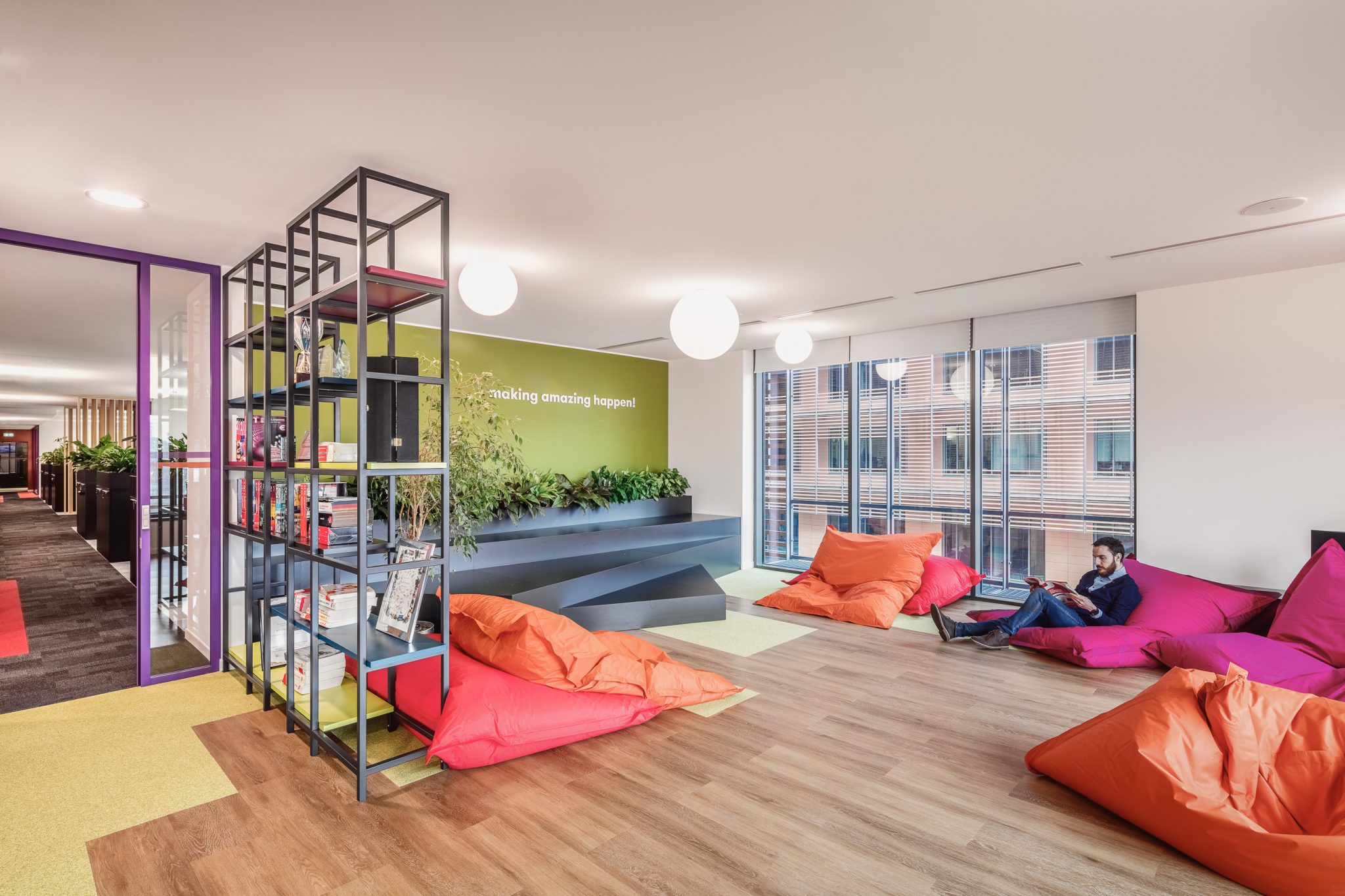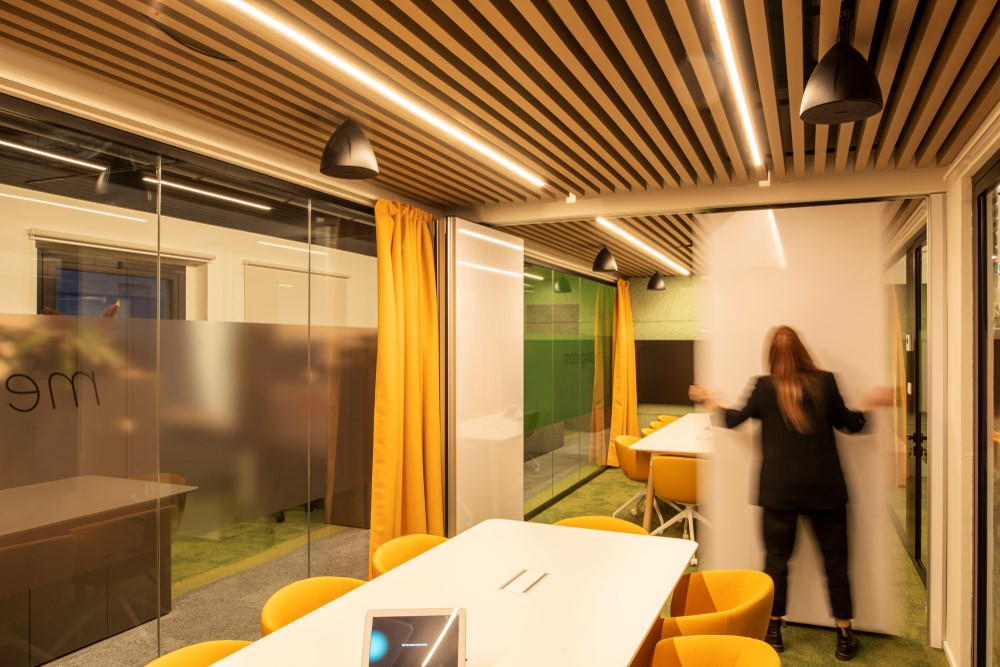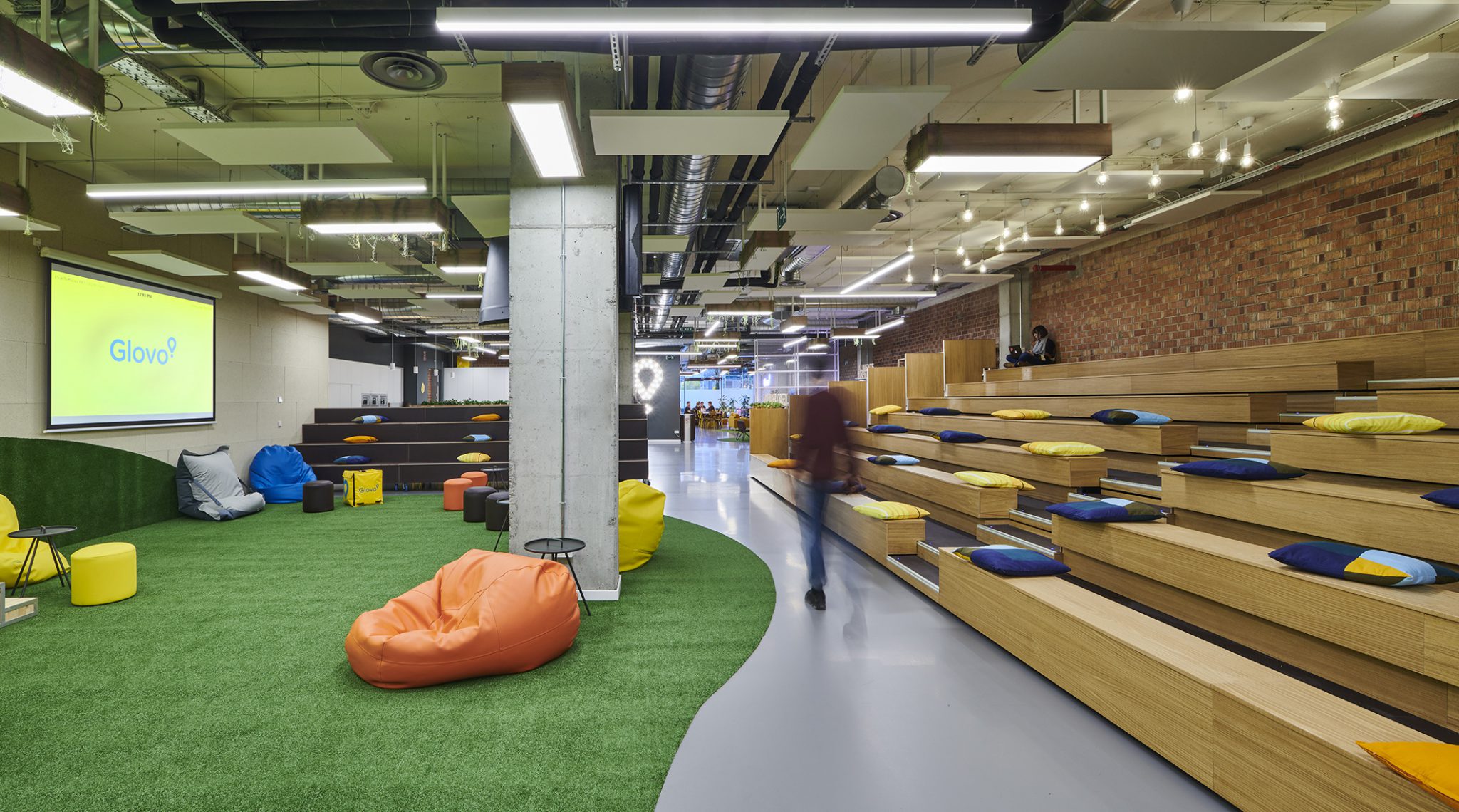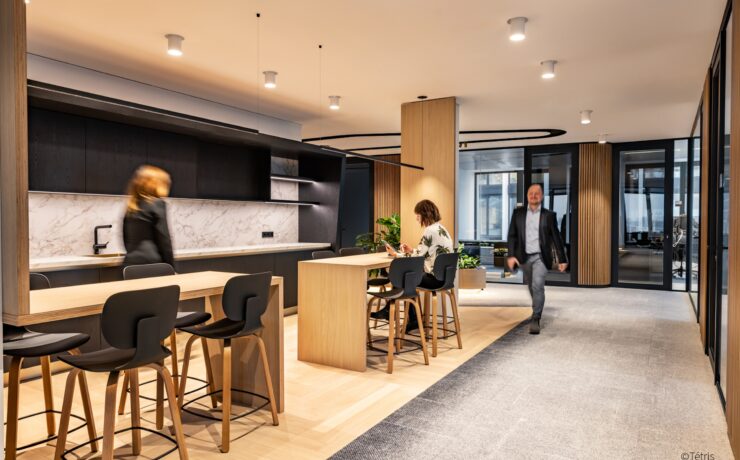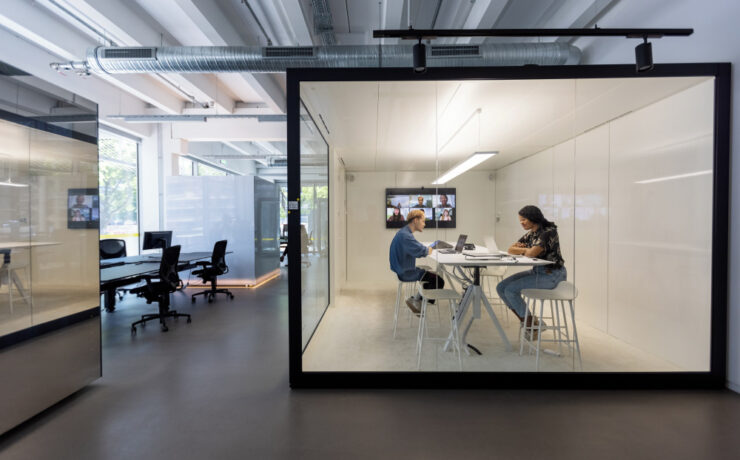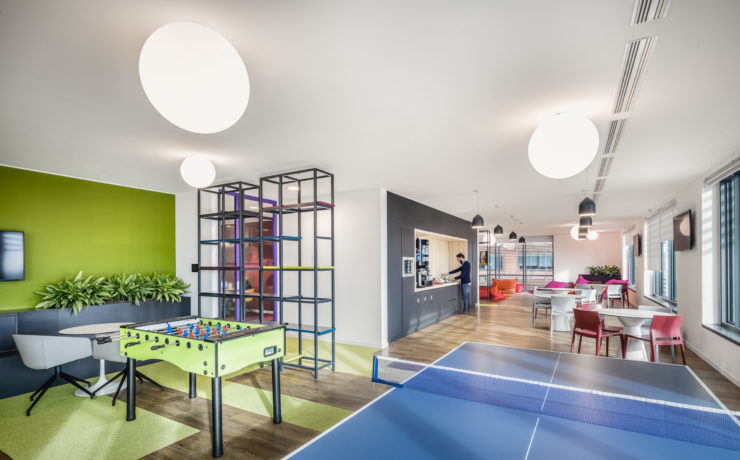The COVID-19 pandemic has changed the way we work forever. Gone are the days of presenteeism and a desk for every single employee; collaborative, flexible workspaces are being ushered in to support a new, hybrid way of working, transforming the way we meet colleagues and clients. So, how can you ensure you’re ready for the future of meetings?
Make your office a destination rather than somewhere people ‘have to’ be.
Long gone are the days of commuting to an office to spend over eight hours at a desk. Instead, the office will be a destination offering a variety of spaces for wellbeing as well as work. More importantly, the main purpose of the office will be to facilitate collaboration and creativity.
Niels Kramer, Creative Director for EMEA, suggests that the ‘sterile’ boardrooms of the past will stay right there – in the past. Instead, more homely, informal breakout areas will be the main space that people will collaborate in as a comfortable surrounding and furniture can inspire creativity and socialisation.
‘Before the pandemic, one of the first things clients would say is ‘I need x number of desks.’ Now, clients are getting rid of desks and asking us for our ideas on collaborative meeting spaces, ones that are informal. People are not going to go to the office to do individual work – they’re going to go to the office to meet other colleagues to work on projects together, to bounce ideas off one another, and to host clients.’
Kramer still believes that there is value in having a physical office, especially when presenting ideas to clients. However, he believes that there is a general trend away from formal, rigid client meetings and sees that generally, all industries are becoming more informal and don’t expect that they’ll be shown to a boardroom for a presentation anymore.
‘Even clients are happy to meet in these more comfortable spaces. The pandemic has starkly shown how the old way of working wasn’t very accommodating and, with younger generations entering the workforce, companies know they have to change to attract and retain talent, as well as win contracts. Even previously reluctant companies understand that flexible working is here to stay, so they’re listening to their employees and adopting a more holistic approach, which is in turn informing their decision to revamp their offices into a more welcoming and dynamic space.’
Tip-top technology will make meetings a breeze – invest now
Technology will play an integral part in the way we meet, even when we’re back in the office. Not everyone will return to the office to attend meetings depending on their role, so technology within meeting spaces needs to facilitate people joining virtually from different geographies. Stéphanie Bonduelle, Managing Director for the UK, expects that there will be a greater focus on the quality of acoustics and lighting, as well as soundproofing and wireless charging. ‘It’s about repurposing pre-existing technology and investing in higher-spec technology to enhance the workplace and make meetings even better. For example, life-sized screens can create the impression that a colleague from another office is physically in the room with you. It enables them to work remotely but also have a real say in meetings, whereas if they’re just on a laptop screen, it’s easy to forget they’re there. In many ways, technology can actually increase inclusivity.’
Speaking of inclusivity, rolling out better technology can actually help drive diversity and inclusion for many companies. Technology can allow staff who have disabilities be included, especially if commuting to a city centre office is difficult for them.
Bonduelle also believes that technology will help keep meetings rooms sterile and safe in a post-pandemic world. ‘We’re going to see that companies heavily invest in better ventilation and air purifiers, touchless access, surfaces and materials that are easier to clean…the possibilities are endless. Bookable meeting rooms will become the norm to not only control the numbers of people inside rooms, but also because it can allow a 10 minute window for cleaning so that the people who are attending a meeting in the room after feel safe. The touch screens used to book these rooms can be adapted in many ways to minimise contamination. For example, if you can book a room via an internal, company-wide app on your personal device, you’re minimising the risk to yourself and others. Alternatively, providing people with a stylus to tap in what they like on a touch screen could also reduce the spread of germs.’
Kramer takes his approach to technology one step further and suggests that for the first time, companies may even decide to allocate a room for a TV or social media studio, saying that ‘when we proposed these ideas to clients a year ago, they didn’t see the need, but after the pandemic, they have been really receptive to dedicating a space for recording’. He believes that a studio that is fitted out with soundproof walls and high-quality recording equipment could be useful for certain companies in terms of making and distributing their own training materials internally and also increase employee engagement, particularly with those who won’t be going to the office often.
This immersive, technology-first multimedia experience is perfectly demonstrated by our partnership with JLL in delivering the award-winning NXT office in central London. The office is fitted out with cutting-edge technology, enabling visitors to digitally tour office spaces, physically manipulate plans via infra-red sensors, and much more. By using the latest technology, people can enjoy seeing live updates to their plans and bring a concept to life through stunning visuals. It’s this kind of technology that will be at the forefront of office design, but it can be implemented in many other ways.
Future meetings might incorporate elements of this such as holograms and VR to provide an inclusive experience where no one feels as though they aren’t part of a crucial meeting, even if they’re dialling in from the other side of the world.
Focus on wellbeing – have a holistic approach
The pandemic has brought a real focus on health and wellbeing, a trend that employers are keen to have at the centre of their reimagined offices. However, there are also other driving forces behind companies wanting to champion health and wellbeing. For starters, a happier workforce is a more dedicated and engaged one. When staff feel as though their employer is empathetic and genuinely cares, it encourages them. Therefore, flexible working is a win-win situation.
This needs to be reflected in the way the office is set up and designed – it not only needs to be a destination that people want to go to, but it needs to align with overall health and wellbeing goals. The office needs to offer something that people can’t get elsewhere. Repurposing old boardrooms that will no longer be used into yoga studios, gyms, meditation zones and other spaces that focus on health and wellbeing will motivate staff to commute to the office as they know that they’re not only working, but they can take time out to relax and improve other aspects of their lives.
There are several ways companies can achieve this. Some will choose to partition larger rooms into smaller, more intimate spaces that limit the number of people allowed in from a health and safety perspective. Alternatively, some businesses may opt for larger rooms to allow for social distancing. Partitions such as sliding doors can easily cut a room in half to allow for smaller gatherings, with the option of opening up into a larger space as and when needed.
And it’s not just the room itself that can be reconfigured to suit a number of needs – even furniture can be influenced to facilitate a flexible meeting room. For example, stackable chairs and collapsible tables can easily be put away when the room isn’t being used for a meeting, allowing for a large, airy space that could be used for a number of team-bonding or wellness exercises and events.

Tomorrow’s workplace starts today.
Are you ready for the dawn of a new way of meeting?
Find out how Tétris can unlock the design and build potential for your workplace.
